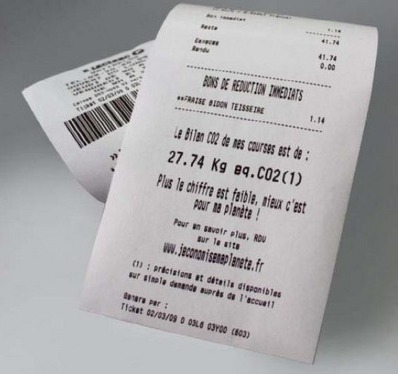
Many European countries have launched environmental information initiatives
> In the UK, PAS 2050 was launched in 2008, to provide a method for assessing the life cycle greenhouse gas emissions (carbon footprint) of goods and services. Tesco, the retailer, developed carbon foot printing for 70,000 of it’s products in 2007. In 2010 £2 billion of carbon labeled products were sold, more then sales of organic products (£1.5 billion) or fairtrade (£800m)
> Belgium is currently working on multi-criteria environmental information
> In Sweden, consumers have access to carbon footprint information, along with nutrition information, on food products
> In France, the “Grenelle” environment law package has set an obligation for environmental information on common consumer products, prepared by the AFNOR/ADEME platform, after an experimentation phase starting in July 2011. Casino and LeClerc (20,000 articles done) started carbon foot printing in 2008
> In the US Walmart started in 2009 with it’s Sustainability Index applicable for all suppliers
The European Commission is due to release a study, by Ernst & Young, on carbon footprint measurement and labeling, presenting Member States’ initiatives, in order to harmonize practices Europe-wide because all the different systems are putting a lot of cost and administrational work with suppliers who mostly supply more if not all retailers. For instance 3M, produces over 55,000 different products and they report that tracing the ingredients through the supply chain and calculate the emissions can cost $30,000 for a single product.
In 2012 a new ISO 14067 will likely be released. They will be compatible with the GHG protocol, a project backed by the World Resource Institute and the World Business Council for Sustainable development.
Lack of transparency in the supply chain is a problem to make very specific LCA’s per product. Suppliers are afraid that if they give disclosure it will make them vulnerable in negotiations.
There is however a lot of progress, examples of an Economist article;
In 2007; the Carbon trust (UK) worked with Walkers (Pepsico chips) to calculate the carbon footprint of their cheese-and-onion potato crisps, at that point 75gram per packet. The process to calculate the footprint revealed an opportunity to save energy however. The potatoes were bought by gross weight so farmers were keeping their potatoes humidified to keep the weight up. Walkers then had to fry them longer to get the water out again. By switching to buying the potatoes based on dry weight the frying time could be reduced by 10%, reducing energy as well as assets ad reduced the carbon footprint of the final product.
Leclerc solved the solution to start implementing 600 generic product categories which are then combined with location of origin and packaging which are part of the bar code/ansi number. This results in 2 similar packed products of different local suppliers will end up with the same score while there might be a difference in reality. The idea is that the difference is smaller then the alternative choices a customer has in for instance processed food versus fresh produce. The novelty here is that they state the carbon footprint of a single product not only next to the price on the shelf but they also communicate the total carbon footprint of the contents of the shopping cart.
Critical note: Carbon is not everything! Look at toxics and resources as well. Think about avoiding for instance rare metals and minerals. best to do a LCA to have a total comparison. You can find one here on our site which is free to use.

Comments by our Users
Be the first to write a comment for this item.